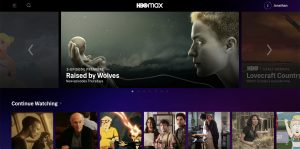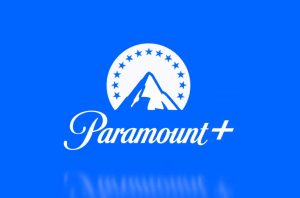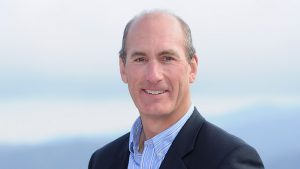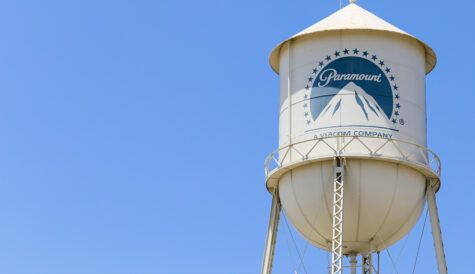
After more than 40 years of operation, DTVE is closing its doors and our website will no longer be updated daily. Thank you for all of your support.
Reasons to be cheerful – AT&T rightfully pleased with HBO Max, but there is still work to be done

Speaking at a Goldman Sachs event this week, AT&T CEO John Stankey said that he “couldn’t be more pleased” with the performance of HBO Max, its Netflix-rivalling subscription streamer.
The SVOD hit four million users after a couple of weeks (with one in four of those being existing HBO linear TV subscribers who gained access to the service through their TV package) in a Q2 where AT&T’s revenues were down by almost a quarter.
Those figures were given only shortly after HBO Max’s initial May launch, and Stankey will have a better idea of how things have gone since then.
The CEO explained: “I know it sometimes gets lost within the context of [the fact that] there’s a company called Netflix that’s done a remarkable job of building a franchise over many years… but we’re not going to get there overnight, nor are we trying to build the exact same product that Netflix has.”
US-based Omdia senior research analyst Sarah Henschel believes that Stankey “was being genuine in the sense that it is very challenging to grow to the size of Netflix.” She says that “one million additive sign ups in the first month is decent, but in such competitive times it is of course important to push for more.”
The streamer has already surpassed internal targets – though they differ from those assigned to HBO Max from third party analysts like Omdia. Henschel says that “when HBO Max releases the ad-supported version of the service, it will be much easier for them to meet user targets. AVOD continues to be on the rise and it is much easier to gain sign ups versus continued paying subscribers.”
Warner has not announced an ad-supported tier for HBO Max, but it is widely expected to introduce it as an option within a couple of years, particularly as the asking price of US$14.99 is on the upper end of SVOD monthly costs.
Steadying the ship
HBO Max had a difficult rollout to say the least. Within days of launch, observers were quick to be highly critical of the service, with analysts at US firm MoffettNathanson calling the platform “chaotic” with a “mess” of brands and “an opportunity lost.”
There was also a great deal of confusion over the HBO Max branding, with critics saying that Warner had poorly communicated how it is different from previous HBO-branded streamers HBO Now and HBO Go.
This has largely been rectified over the past few months, Omdia’s Henschel says. “It does seem that the confusion of the original launch has blown over,” she notes. “Enough time has gone by that hopefully by now consumers have easily been able to settle into whichever app they prefer.”
She adds that “after finally pushing app updates to most devices, I think consumers now understand what they do and don’t have access to. These transitions and app updates would have likely been more effective leading up to the launch rather than in the month or so post-launch.”
One aspect that hasn’t been resolved however is a lack of availability on Roku and Amazon platforms.
Amazon has not commented, but appears to be more hostile than Roku – with the latter’s CEO Anthony Wood last month saying that “we’re not always the first, when it comes to adding new services to our platform, because it’s important to us that we establish a win-win relationship.”
Around the same time, WarnerMedia CEO Jason Kilar accused Amazon of not working in the interest of consumers, and argued that Amazon Fire devices would suffer going into the holiday period without access to the platform.
Henschel says that she is “surprised that [WarnerMedia] still have yet to come to an agreement with Amazon and Roku,” and that it “may be unlikely that an agreement is ever reached.”
She adds that the launch of an ad-supported model may help to sway Roku, as an AVOD component “will instigate further revenue splits and negotiations” and that Roku is “a highly ad-funded platform.” An agreement with Amazon may be harder to reach.
Content conundrum
One other criticism of HBO Max that has persisted – partly out of WarnerMedia’s control – is a “lack of new, buzz-worthy content,” as Deadline put it.
HBO Max launched with only Love Life as its major original series. A number of smaller-scale titles, like a modern version of the classic Looney Tunes cartoons, provided extra fibre.
The Anna Kendrick-starring rom-com series was positively received by critics and audiences, but failed to make much of a mark in the cultural zeitgeist when compared to other streaming-only originals.
In the months since, Warner has leant on the strength of its brands. Shows including Cartoon Network cult hit Infinity Train and DC Universe’s excellent Doom Patrol saw their latest seasons transition to the streamer as HBO Max originals.
Arguably the first purpose-built HBO Max series to have the same kind of budget and scale as its linear counterpart is the Ridley Scott produced sci-fi Raised By Wolves. The show has been praised for its design but criticised for its po-faced presentation and has drawn less attention than the linear HBO’s Lovecraft Country which is also in the midst of its first season.
Raised By Wolves has evidently been enough of a hit for it to be renewed for a second season, but HBO Max is still waiting for its first bit of must-see TV.
Not that this lack of killer content is necessarily by design, with HBO Max launching during the peak of the Covid-19 pandemic and production on a number of titles either being suspended or postponed.
“Covid-19 has created a really unique opportunity here,” Henschel says. “There are two sides to the ‘content’ coin. One is that due to Covid-19 there have been significant slowdowns in production so it’s quite challenging for services to continue to push new content unless they already had a good amount in their pipeline. Since HBO Max Originals were still being produced and there was not a high volume in their post-production pipeline, Covid has stalled their releases.”
The analyst cites the reunion special of iconic sitcom Friends as an example of one anticipated show which is now on pause. She adds: “On the flip side, many consumers are still at home and hungry for new content. As time goes on new content becomes more and more valuable. With this there should be strong emphasis on pushing out more content, it’s really just a tough time to film right now.”
Lessons learned
 During a pandemic is not an ideal time to launch an expensive product, even if it is one which only requires a user to sign into a new service, but WarnerMedia will have learned from this baptism of fire to improve the product going forward.
During a pandemic is not an ideal time to launch an expensive product, even if it is one which only requires a user to sign into a new service, but WarnerMedia will have learned from this baptism of fire to improve the product going forward.
Other operators and broadcasters will also be wise to pick up cues from HBO Max, the Omdia analyst says.
One such party will be ViacomCBS, which this week officially lifted the lid on Paramount+, its ‘super service’ streamer which will launch in 2021.
“Paramount+ would do well by having strong brand strategy, business model, and clear messaging,” Henschel says. “Paramount, like Warner, has a lot of strong assets. I would advise to make the offering as simple and clear as possible. I would also recommend keeping the strong momentum that Pluto TV is seeing and leveraging how the two platforms could best work together.”
The SVOD market is becoming increasingly saturated, particularly in the US. Now that HBO Max is an established force, WarnerMedia will want to continue its momentum, but it will also keep an eye on emerging players to ensure it is not surpassed.




